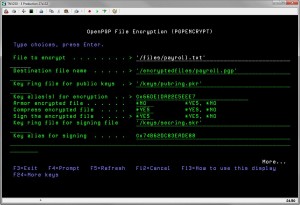An article at CIO outlined a very real disconnect between enterprise software and the applications employees use in every other aspect of their lives. Employees who are used to working from their mobile devices on the go feel frustrated and confined in the legacy world of the systems they are forced to use at work.
Enterprise systems and applications seem to be trapped in the era where the very fact that the computer worked at all, the fact that one could complete ones duties electronically, was amazing on its own, and the ease or intuitiveness of the user’s experience scarcely warranted any thought at all. UX has not historically factored into the equation for business functions.
There’s a reason Apple products are notorious for being so universally great: Apple focuses on improvement of every aspect of the UX. Intuitive interaction between users and their apps is not just for end-users, customers, leads, or the general public. If the business tech world really cares about corporate productivity, improving its services, or maintaining importance (not to mention budgets), it should take the time necessary to focus on enterprise UX.
I have, in the past, maintained and administrated a few internal-only enterprise systems that were, or became, mired in the deep muck of legacy code. A green-screen mainframe server with slapdash web-based overlays, or clunky and ugly terminal emulation programs, are like Kryptonite for the average user. The deeply rooted old systems, even the fancy menu-driven ones, or ones that are still supported, are not known for their intuitive interfaces. In many cases, they were evolved (not designed) from the ancient mainframe business machines of old.
Users absolutely hated these systems, and dreaded having to use them (even if they weren’t telling us about it). Management refused to spare the expense necessary to upgrade to anything more modern, so productivity suffered. The more smart and daring employees would take notes and work within their own preferred environments, then sit down later and manually enter everything into the ancient electronic record books, taking time away from the rest of their job, lowering their ability to produce, and hurting users’ opinion of the Tech departments.
Employee satisfaction may not matter when the CIO could be called upon to straighten out users who refused to use the poorly built old systems, but, as noted in the article linked above, the CIO is now likely to be the one refusing to slog through the unusable enterprise mess in favor of working from the road, working from home, or just preferring a mobile workflow, even while in the office. Eventually, tech departments will need to transition away from the “keepers” of the apps people need to do their jobs, and toward providing a thin layer of services that can facilitate productivity without getting in the way, or compromising data security.
If enterprise tech cares about its continued existence, and the preservation of its budgets, it will start caring about UX.
